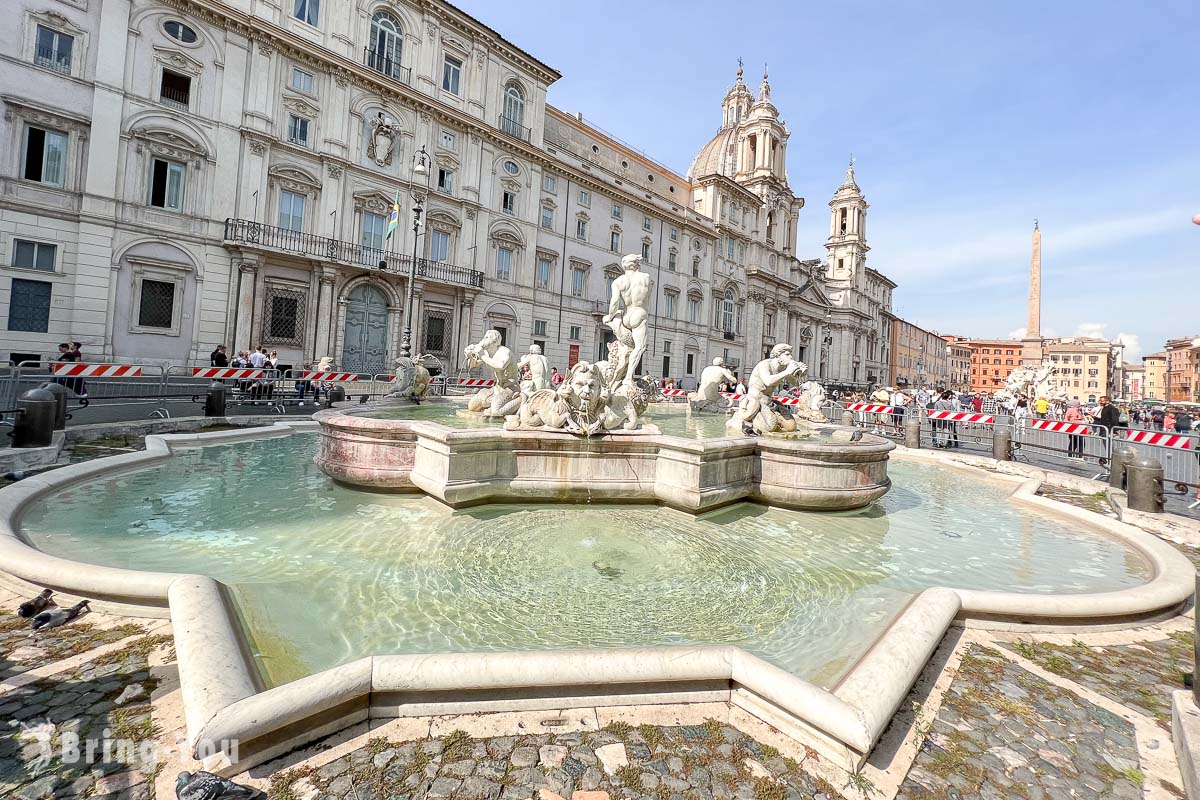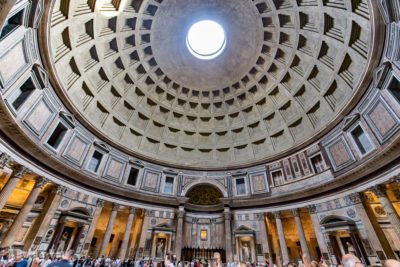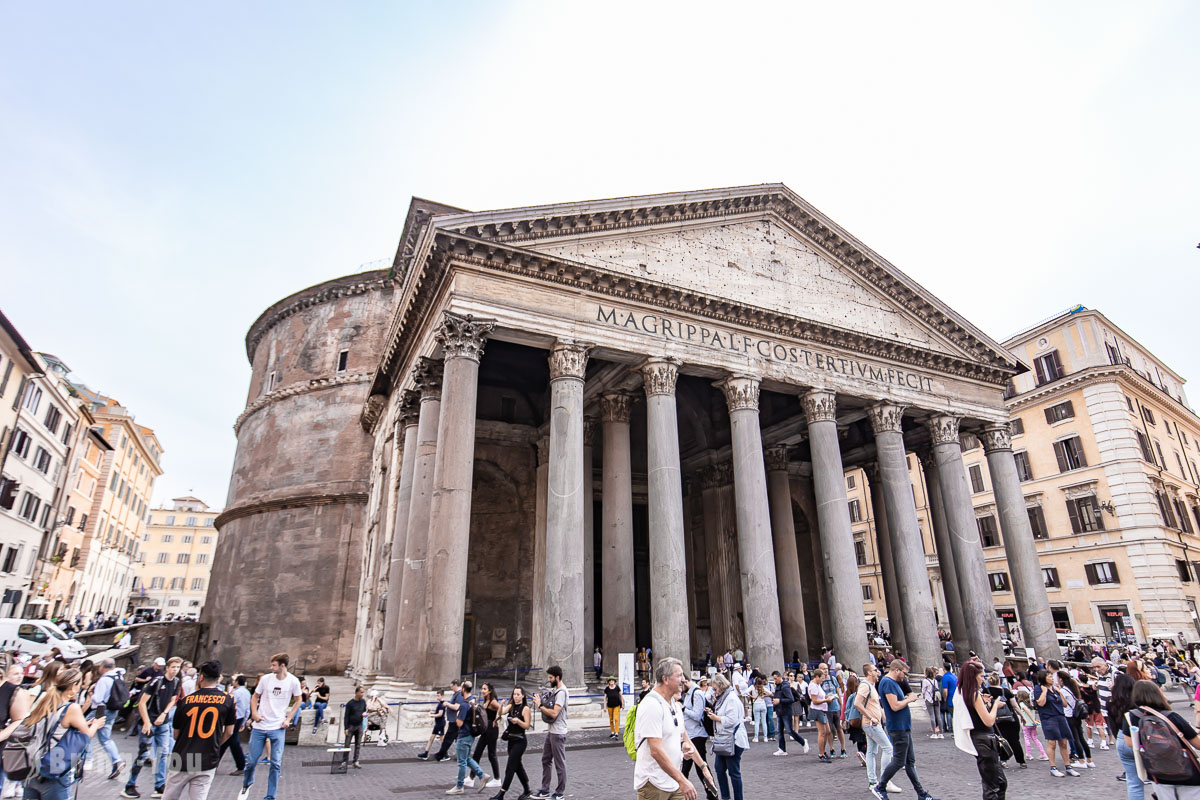
M·AGRIPPA·L·F·COS·TERTIVM·FECIT
Or as translated by the people of Rome:
“Marco Agrippa, son of Lucio, consulate for the third time, built”.
This is the line carved into the washed-out front of the Pantheon, one of the Seven Wonders of the Ancient World.
The Pantheon, going against all odds, with its massive structure standing tall despite numerous destructions in fires and tears. For the past 1900 years, this mind-boggling heritage building is still recognized as one of the largest concrete domes in the world that have never been enforced with any additional support.
Though marvelous, many people claimed that they didn’t need more than 15 minutes here. However, history buffs and hardcore architecture fans know one thing for sure: each corner of the Pantheon has something magical that their hungry souls are looking for – from the tombs of the noble tucked away behind the marble walls to an ancient Roman concrete.
In this article, I’ll be sharing what caught my eye during my visit to this otherworldly man-made wonder. More on that below.
How To Get To The Pantheon?
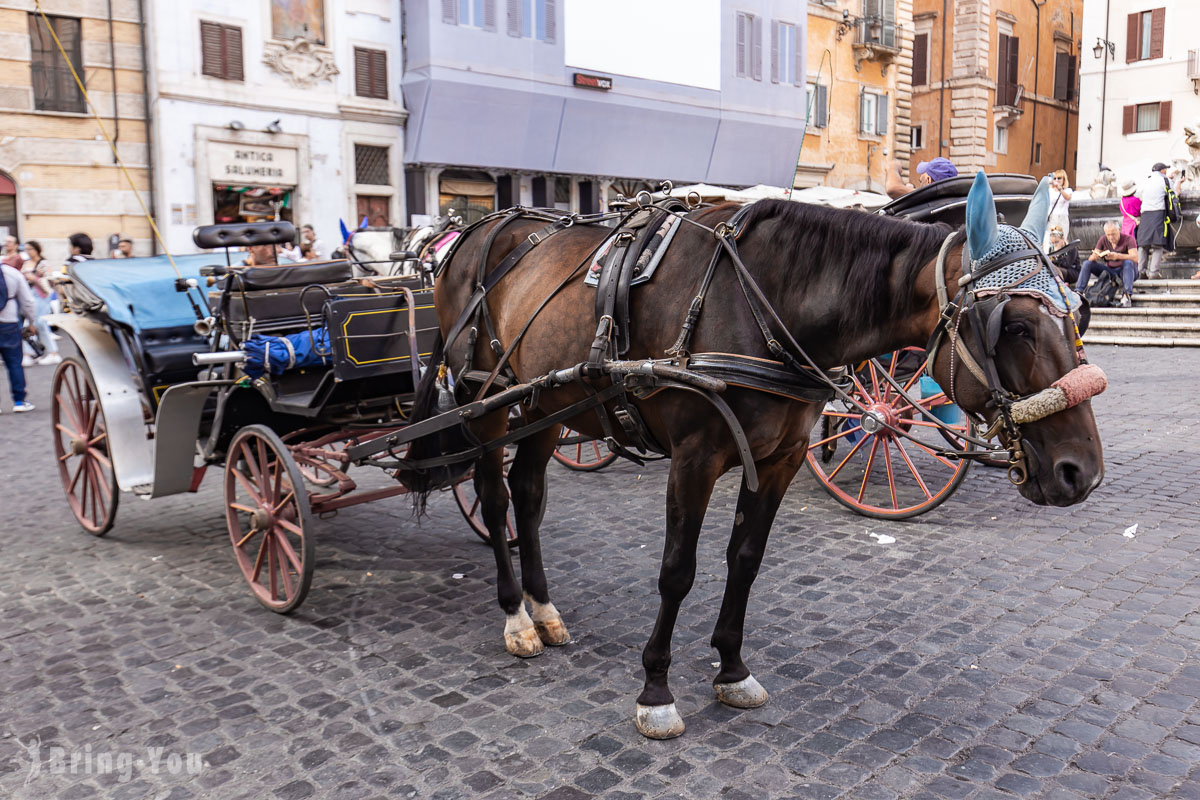
The Pantheon is located by the eastern bank of River Tiber, a short 15-minute walk from the subway station of Barberini right next to the Fontana del Tritone, a 17th-century baroque fountain.
As of now, entrance to the Pantheon is free of charge except for guided tours. However, as written on the official website, the state is planning to collect a small fee to keep the operation going, starting from July 2023. To stay updated on the latest opening times and public holiday notices, check out the website before setting out.
Note: Visits are not allowed during Masses (Holidays: 10.30 am; Saturday: 5.00 pm).
A Brief History Of The Pantheon
I know there’s a lot to take in when we talk about the history of this symbolic landmark of Italy. But let me break it down in the most simple way so you don’t miss out on anything.
Let’s start with Augustus, the first Roman emperor and the empire’s greatest ruler of all time. Augustus has a lieutenant who’s also a close friend and his powerful deputy that goes by the name Marcus Vipsanius Agrippa.
Agrippa wanted a holy place to worship all the twelve Gods controlling Mars and Venus as well as to pay tribute to the living Sovran. Therefore, he went ahead and built the Pantheon in 27 BC, using his own expense.
Agrippa’s idea was to break the building into several parts, including a rectangular base, teaming up with a transverse cellae on the inside which are separated by a space called pronaos in between. The first materials used for the making were marble-clad blocks and wood.
However, marble-clad blocks and wood could barely hold themselves together through fire. For that reason, the building collapsed in pain twice during the fires of 80 and 110 AD. Afterward, a few emperors attempted to renovate it but not until Emperor Hadrian took hold of it and decided to renovate the entire thing. That was the year 120 to 124 AD.
In 476 AD, the Western Roman Empire fell and Byzantine Italy was established, taking over five regions of the Italian Peninsula. For that reason, the Pantheon was under the control of the Byzantine Emperor Foca who decided to gift the building to Pope Boniface IV who then converted it into a church in 609 AD. As a result, the Pantheon, which was supposed to be left behind and forgotten when the West Roman Empire collapsed, managed to remain its function and stand still.
After all those years, the Pantheon is now preserved as a museum that reflects the almighty history of Rome, as well as living evidence of special volcanic concrete that’s known for its longevity.
Burials Of The Pantheon
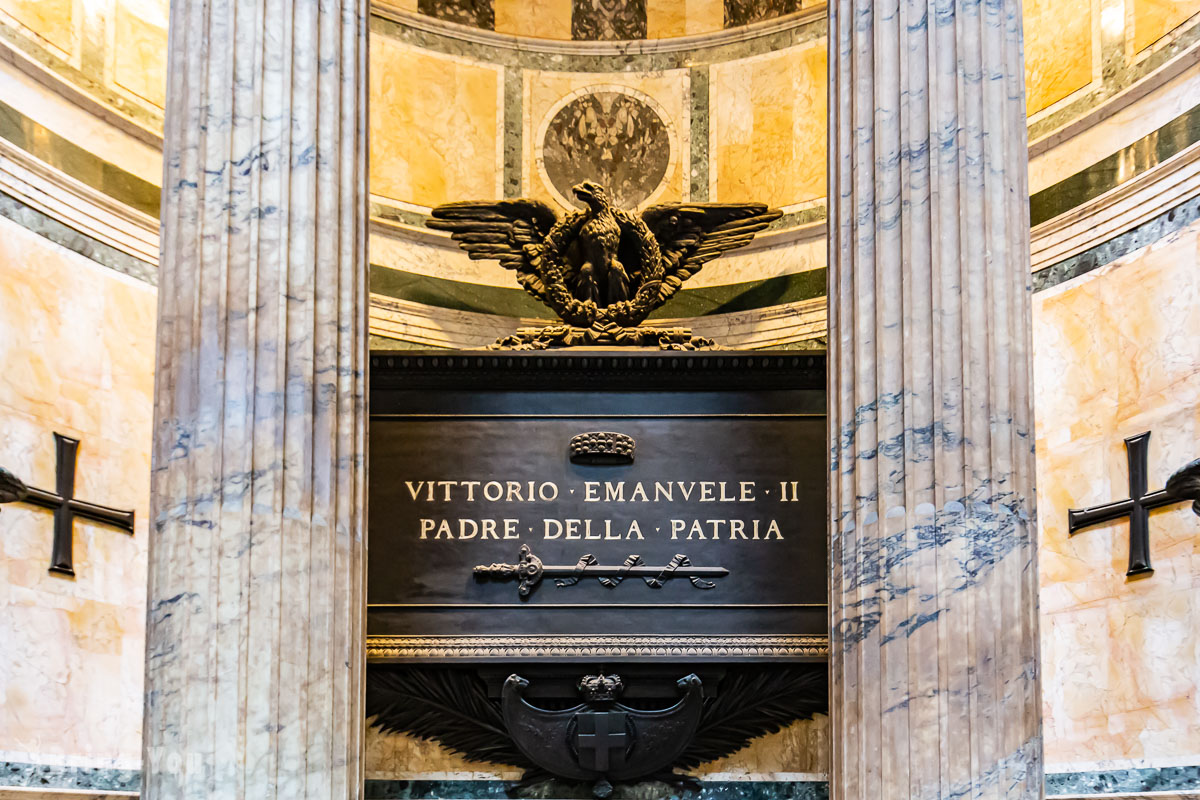
The grandeur of the Pantheon went beyond its major purpose as a Christian church. The year 1520 marked the turn of a new chapter in the Pantheon’s history when the grand ground was considered to embrace a fascinating role as a burial site for notable Italians.
Everything started with a guy named Raphael, a renowned Italian artist who was pleased to have the Pantheon as his final resting place. Inspired by his legacy, more artists signed up to rest their bodies there in the afterlife. This tradition remained unchanged even until the 19th century when the first Kings of united Italy were buried in honor.
The Pantheon At A Glance: Get Ready For A Visit
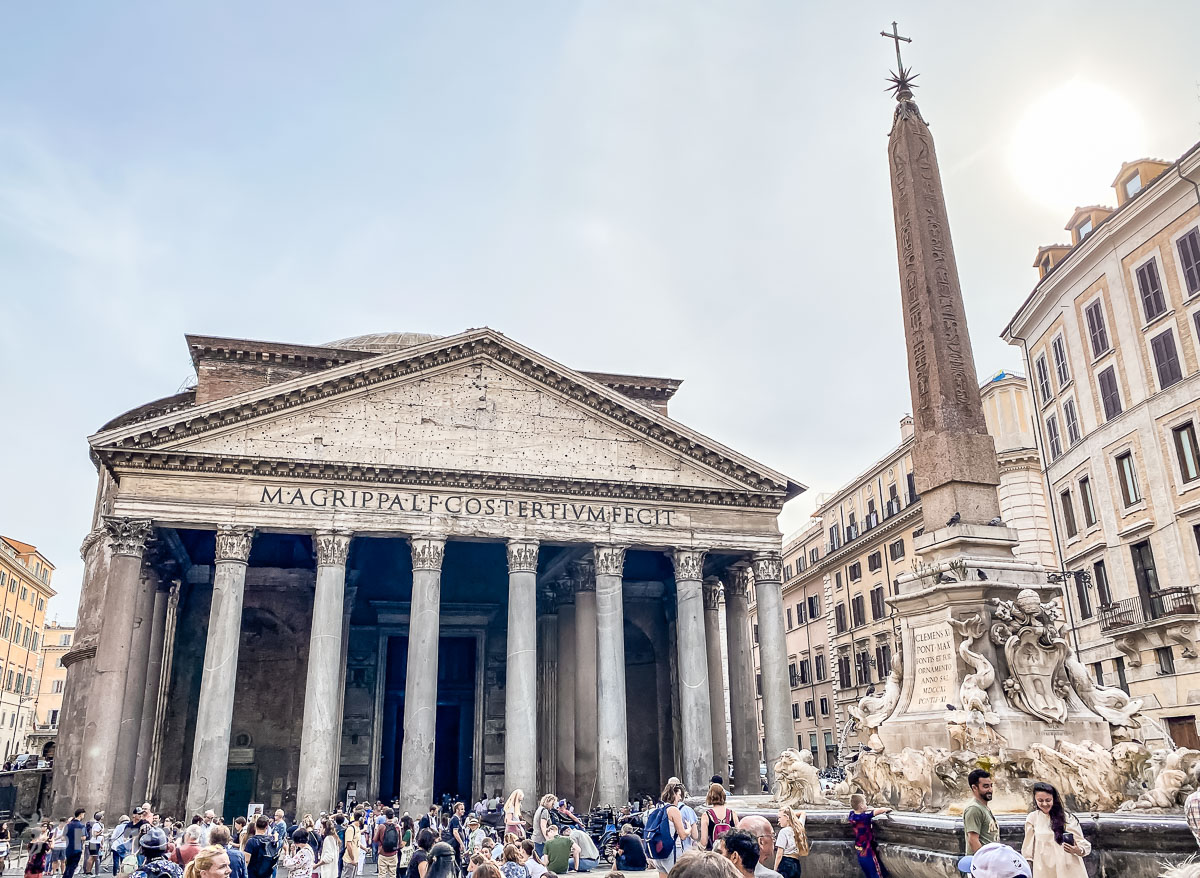
Though free to visit, there’s no way you can ditch the queue, especially if there are seven million visitors a year pulled into this incredible monument.
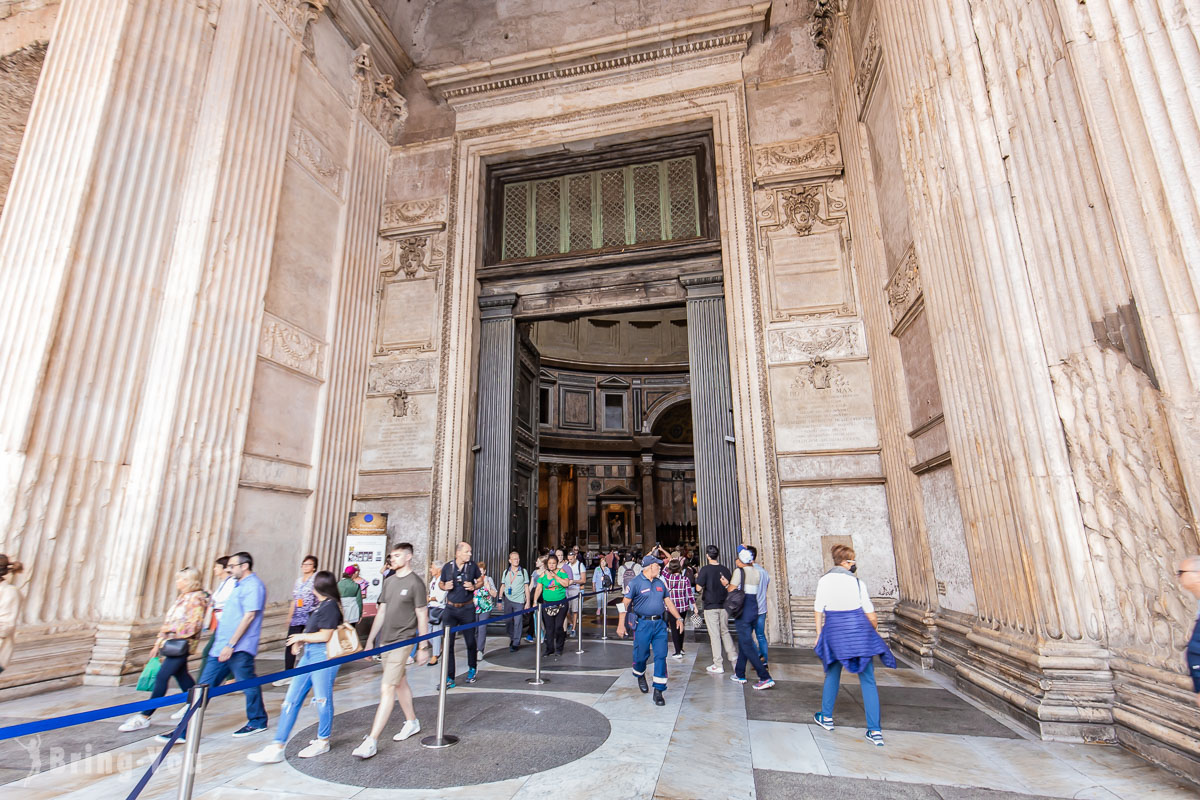
However, the flip side is that the queue is not too bad anyway, with roughly five to ten minutes to thin out. The busiest time of the day to visit the Pantheon is in the morning, while noon time has fewer people and there’s literally no queue at all.
Before entering the Pantheon, don’t forget to contemplate the entrance design. The gate is made of copper, soaring over seven meters in height and four meters wide. It is one of the oldest doors Roma history has ever recorded.
The Pantheon Construction: Innovative Roman Engineering Techniques
Just like you, I’d been wondering what kind of materials were used in the making of this world’s oldest structure. Now let me walk you in on a little secret: the walls of the Pantheon used a whole chunk of something called Roman concrete, an ultra-durable material recognized as a revolutionary choice for its time.
The secret behind this innovative material is a blend of lime clasts and volcanic ash. But it’s not just any other average volcanic ash.
In fact, this amount of volcanic ash was brought all the way from Pozzuoli on the Bay of Naples.
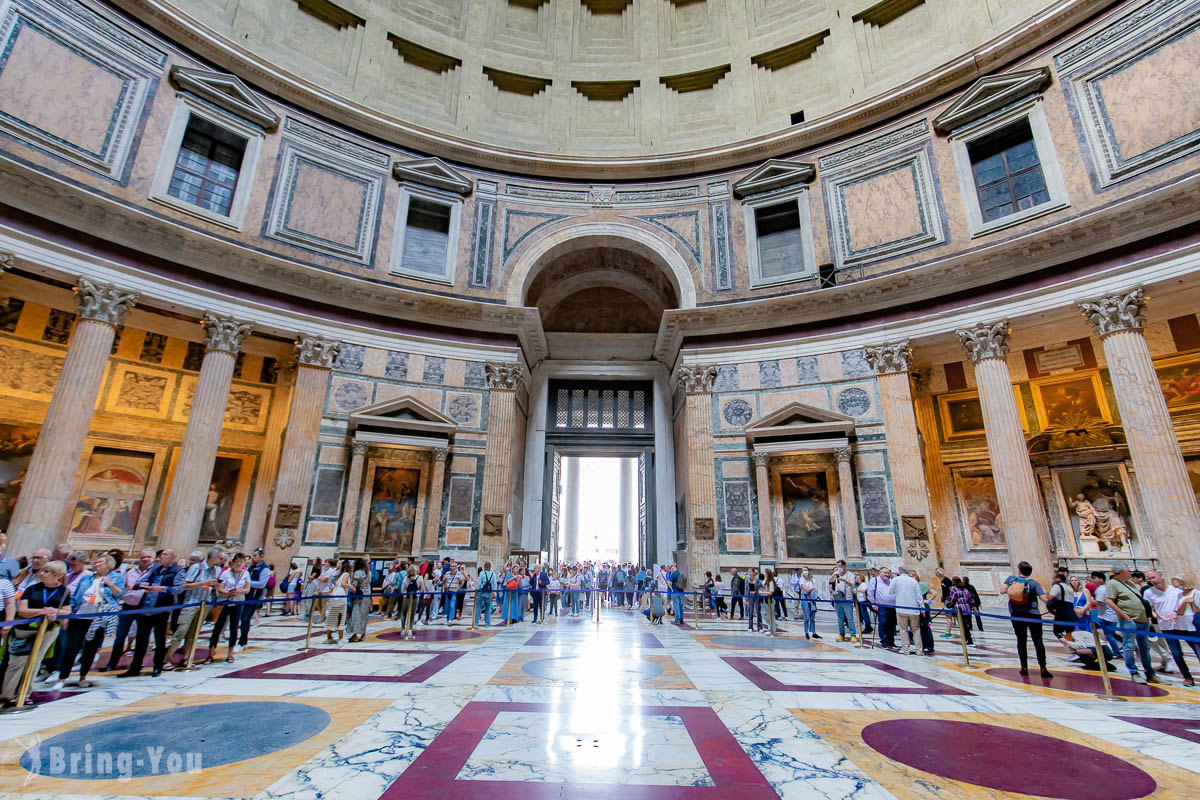
When these two ingredients are well combined, you end up with a perfect reinforcement that’s not only durable but also lightweight, self-healing, and versatile.
When the Roman engineers encountered tricky nooks tucked in the corners of these crazy thick walls, their concrete became a life savior. Today, these nooks are also known as alcoves wrapping around the rotunda of the Pantheon, creating a typical beauty of this one-of-a-kind masterpiece.
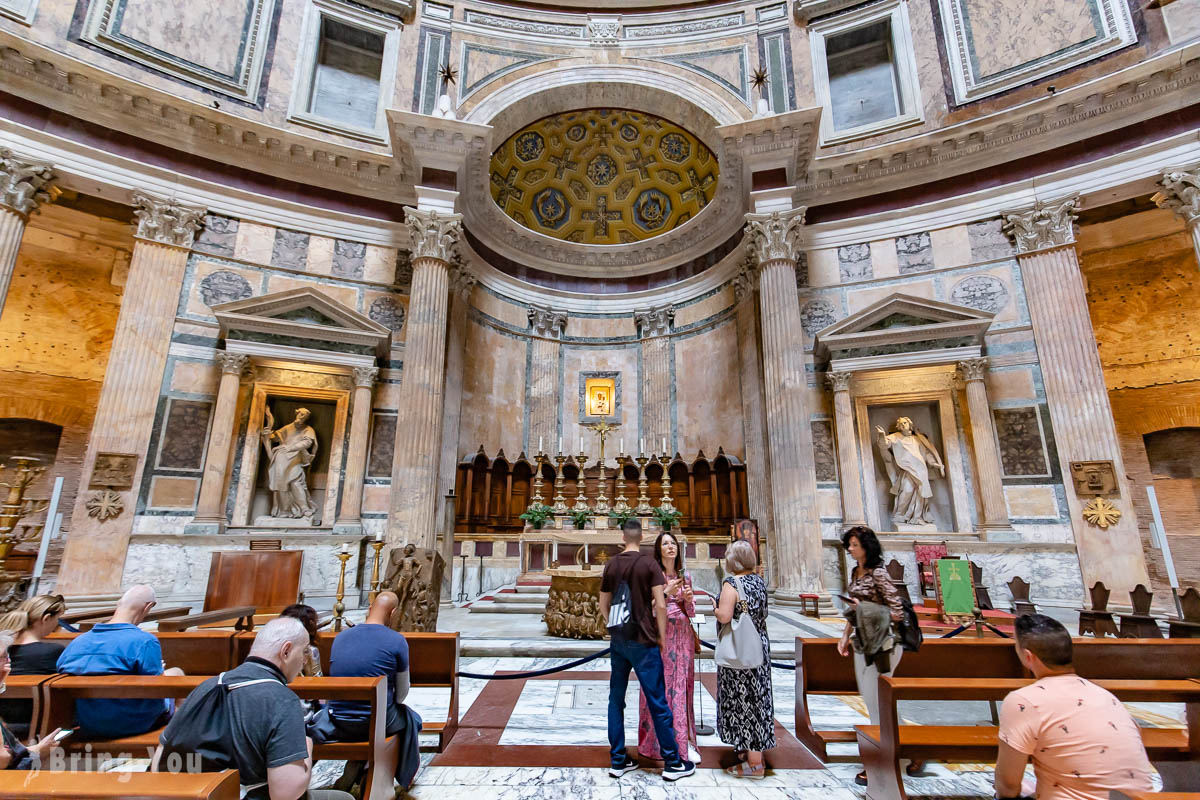
The Dome Of The Pantheon
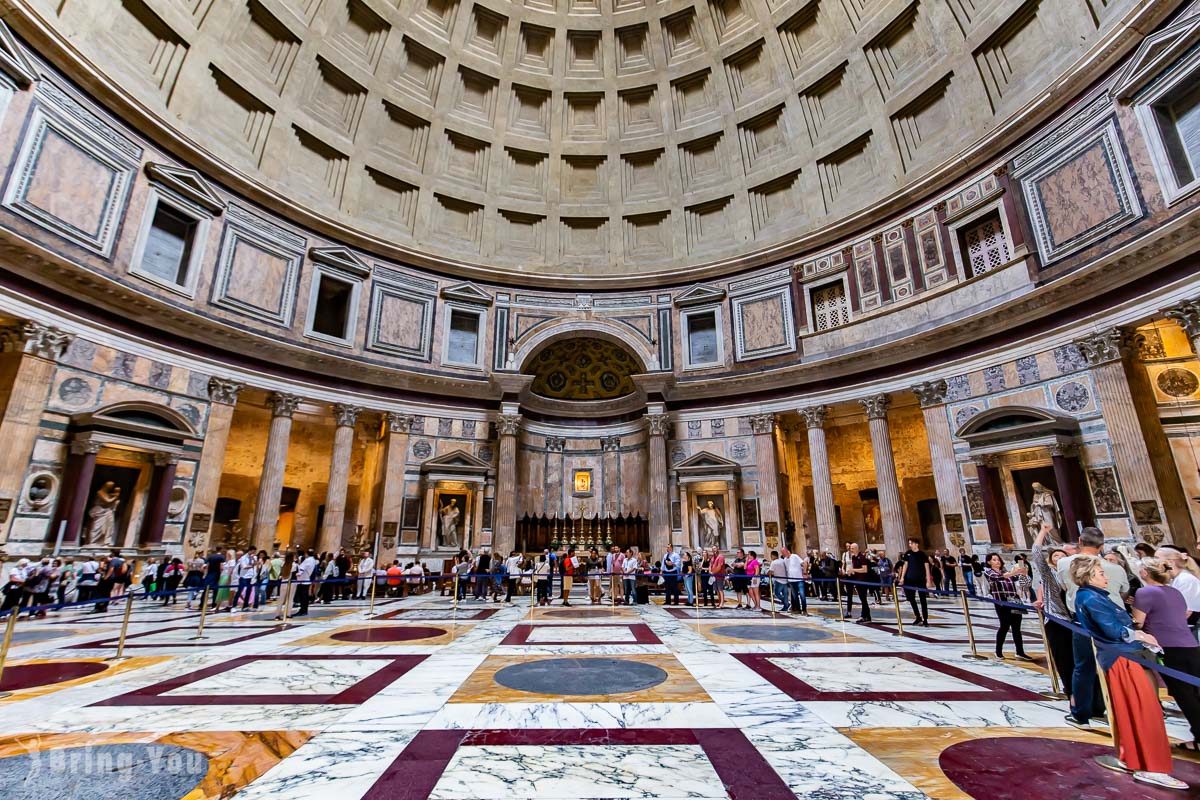
One of the most striking features you will encounter first after walking through that massive gate is the dome. Once again, Roman concrete is used for the making – but due to its tricky design, the concrete is carefully mapped out to hold the structure of the ceiling without losing its timeless charm.
The engineers decided to create six graduated layers of concrete. But this time, they added scoria rock, a kind of vesicular basaltic lava known for its frothy texture and can reduce mud problems.
What else do you think makes the statement of this massive, incredible dome design?
Well, if your guess goes for the ‘skylight’ nestled in the middle of the dome, you’ve got it right!
Or as the Romans called it – the skylight of the Pantheon is their “oculus” – meaning “eye”.
The oculus serves two purposes: acting as a natural light source to brighten the interior and a sundial.
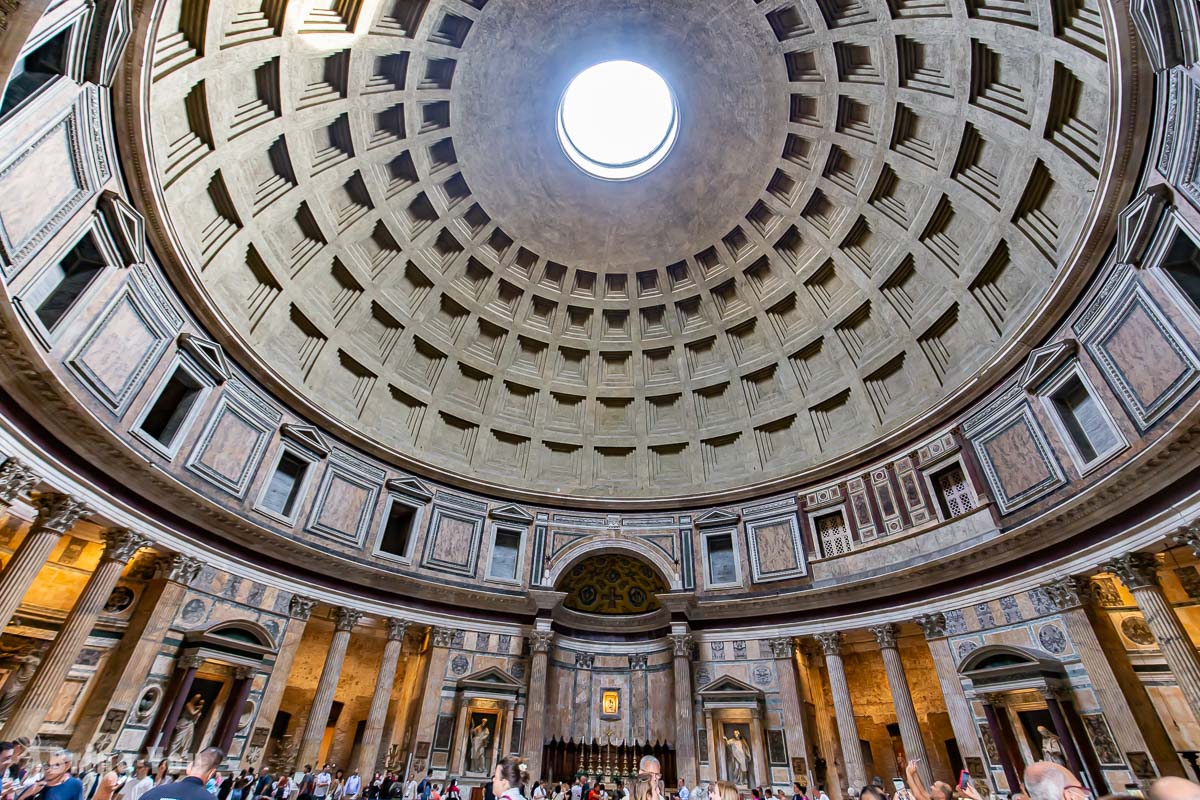
Even though the marvelous dome is the biggest hook of the interior, don’t forget to pay closer attention to what your feet step on. The ancient floor actually holds a drainage system underneath. So when rainwater falls through the oculus, this drainage system will suck it all in.
Strolling down its vibrant streets, you’ll quickly understand why the Pantheon is such a magnet for visitors of all ages. I’m not sure if they really enforced a strict dress code for visitors but I saw people in tank tops getting in so that should not be a big problem.
However, it’s still mindful if you wanna stay in line and pay respect to this holy building. Stick to appropriate outfits that are not too revealing and you should be good.
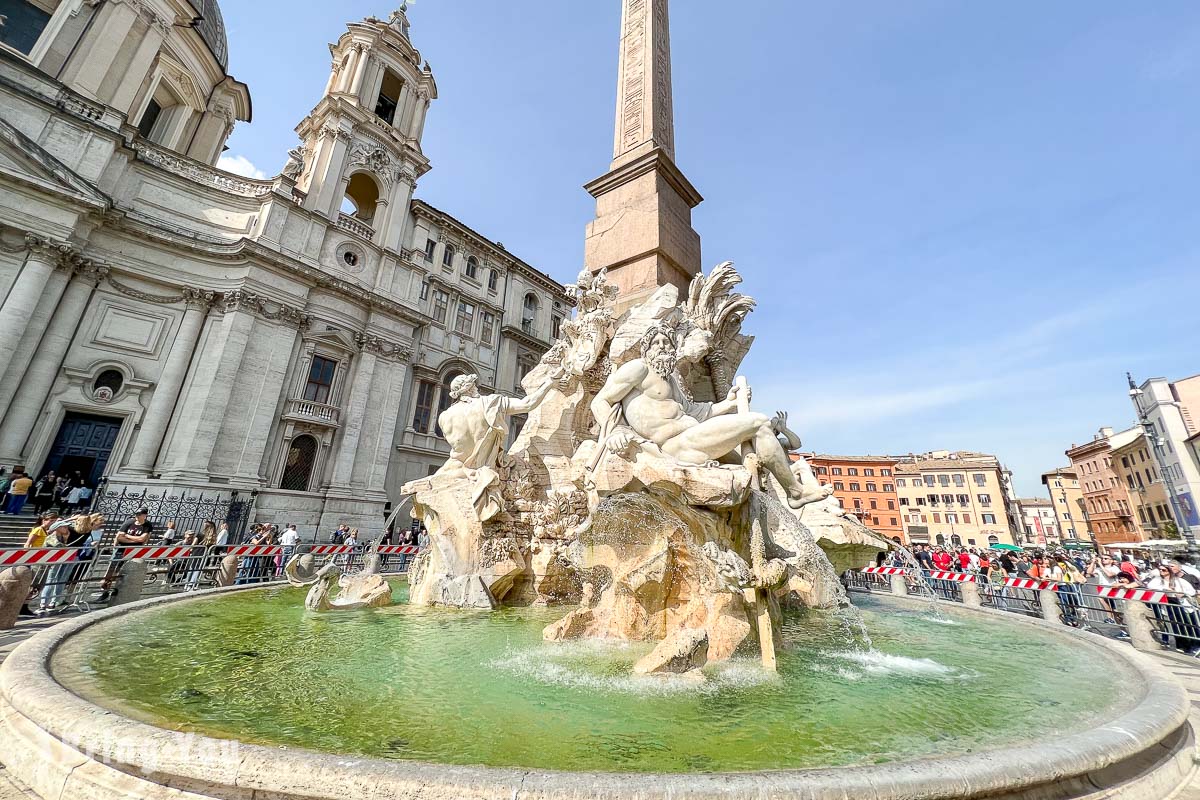
Nearby, there are plenty of photogenic historical spots to check out such as the Neptune Fountain, Fiumi Fountain, Doria Pamphilj Gallery, and Monument to Victor Emmanuel II.
